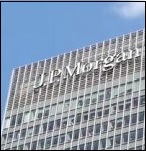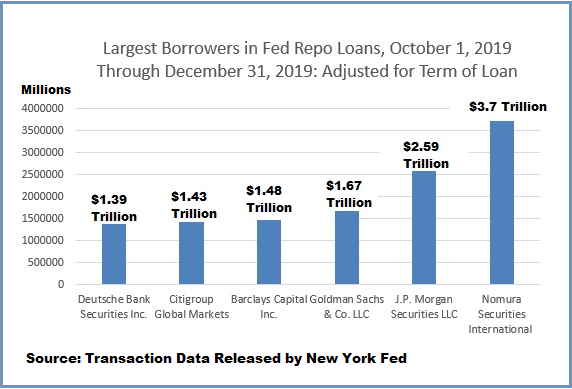By Pam Martens and Russ Martens: March 28, 2024 ~
 Yesterday, American Banker released a report showing that five banks in the U.S. hold a combined half trillion dollars in commercial real estate (CRE) loans. It came as a big surprise to a lot of folks that the bank holding the largest amount of CRE loans is JPMorgan Chase – whose bank holding company is also exposed to $49 trillion in derivatives as of December 31, 2023 according to the Office of the Comptroller of the Currency. (See Table 14 at this link.)
Yesterday, American Banker released a report showing that five banks in the U.S. hold a combined half trillion dollars in commercial real estate (CRE) loans. It came as a big surprise to a lot of folks that the bank holding the largest amount of CRE loans is JPMorgan Chase – whose bank holding company is also exposed to $49 trillion in derivatives as of December 31, 2023 according to the Office of the Comptroller of the Currency. (See Table 14 at this link.)
JPMorgan Chase is already considered the riskiest bank in the U.S. according to its regulators.
American Banker reported the following CRE totals for the five banks: JPMorgan Chase, $173 billion; Wells Fargo, $139.65 billion; Bank of America, $82.8 billion; U.S. Bank, $55.66 billion; and PNC Bank, $48.89 billion.
Some of the same hubris and willful blindness that prevailed in the runup to the subprime mortgage crisis that blew up large financial institutions in 2008 is showing itself today in regard to commercial real estate loans at federally-insured banks.
On March 7, Federal Reserve Chairman Jerome Powell testified before the Senate Banking Committee as part of his Semiannual Monetary Policy Report to Congress. During his testimony, Powell downplayed concerns about the impact of commercial real estate loans at the largest banks. Powell stated: “There will be bank failures, but this is not the big banks. If you look at the very big banks, this is not a first order issue for any of the very large banks. It’s more smaller and medium size banks that have these issues.”
If CRE is not a problem at the largest banks, that’s because both the banks and the Fed believe that the Fed will always spring to the rescue with an emergency bailout program. In fact, the Fed has already created just such a program that’s waiting in the wings. It’s called the Standing Repo Facility (SRF). It has a lending capacity of $500 billion and can lend to both the federally-insured bank and its trading unit (primary dealer) – thus giving the so-called “universal banks” on Wall Street two bites at the bailout apple.
For a look at just how quickly the Fed can sluice money to Wall Street mega banks with few questions asked by Congress, check out the chart below. It shows the Fed’s emergency money spigot to the mega banks in the last quarter of 2019 – for a financial emergency at the banks which has yet to be explained to the American people.
To grasp how radically things have changed since 2008 when former Goldman Sachs veteran-turned Treasury Secretary Hank Paulson took a 3-page document to Congress and demanded a $700 billion taxpayer bailout for the banks (Troubled Asset Relief Program, TARP), let the full meaning of the chart above sink in. The Fed can now funnel trillions of dollars in cumulative loans to mega banks on Wall Street, report the names of the banks and amounts borrowed two years later, and get a complete news blackout from mainstream media. (Wall Street On Parade was the only media outlet to chart the details and report the names of the banks that got the trillions of dollars in loans in 2019.)
Powell might have his own agenda in playing down the risks to the mega banks on Wall Street. According to Senator Elizabeth Warren, who sits on the Senate Banking Committee, Powell is leading the charge behind the scenes to overturn federal regulators’ proposal to require the largest banks to hold larger amounts of capital to prevent a replay of the 2008 financial crisis.


